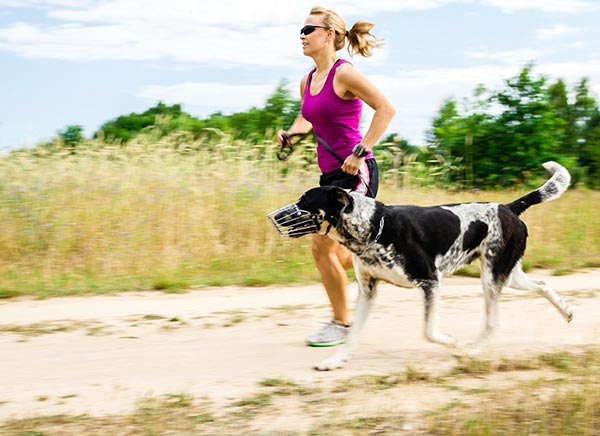Exercise and Normal Recovery

Pet parents who want to keep their dogs happy and healthy know that regular exercise is an important step to accomplishing this important goal. Sedentary pets—like inactive people—are more likely to gain extra weight and suffer other health consequences as well. Moreover, too much stationary time can lead to feelings of boredom—yes, even for our four-legged friends.
As important as exercise is, though, it is also important to consider your dog’s tolerance level before you start exercising him.
Health Checks
Even if your dog looks to be in ideal shape, his tolerance for exercise may be lower than you think if his only exercise has been a daily walk or indoor play session. Let’s say that you enjoy running. Surely, you didn’t begin this pastime by competing in marathons. Much more likely, you started out at a more conservative speed and covering much shorter distances. You built up your own stamina by slowly increasing both your distance and speed.
Now let’s suppose that you want to start taking your pet with you when you run. The first step should be a visit to the veterinarian. Share your plans with the vet and ask for her to give your pet a basic physical examination to make sure that he is ready for the challenge. Dogs with some serious or severe health conditions may have more stringent exercise limitations.
Getting Started
Once you get the green light from the veterinarian, you should still start slowly. If your dog is accustomed to taking a short daily walk, increase the frequency of these jaunts to two or three times a day and add a bit of distance. You can also step up the pace a bit, but hold off on moving from walking to running until you see how your pet is handling the increased activity. If he does well with the more demanding walks, try running with him for part of the distance. You can increase the ratio of walking to running a little at a time, as he acclimates to the change.
If your dog is overweight, you will need to start much more slowly. You may even have to wait until he loses a few pounds before you increase his activity level too much. This can be accomplished by swapping him to a diet dog food, eliminating treats, and watching his portions. Of course, talk with your veterinarian before changing your pet’s diet. Eventually, he will be ready to start the new exercise routine, but doing so too early could lead to injuries or exhaustion.
Other Exercise Routines
Of course, running isn’t the only form of exercise you can enjoy with your pet. Informal games like fetch or playing with a ball or flying disc can be fun and healthy activities for your dog. Beaches and dog parks offer great open spaces for these pastimes. Some owners find that their dogs enjoy organized activities such as canine agility, rally obedience, and even freestyle dancing.
“SLOW DOWN, PLEASE!”
Even seasoned canine athletes have limits to how much activity they can handle. Whether you are taking your pet to the dog park or an agility competition, you must follow a few basic guidelines. First and foremost, watch your pet for signs that he is getting tired. Exercising during warmer times of the year in particular can be draining for both pets and people. Always take along water as well as some type of bowl for your dog. Be sure not to get so involved in what you are doing that you forget to take regular water breaks.
Taking rest breaks is also vital. If your idea of a fun day with your dog is going hiking, schedule enough time into your itinerary so you can stop and rest as needed. The more intense the terrain, the more breaks your pet will likely need. Both rest and water should be given at regular intervals, even if your dog appears to be raring to keep going. Many dogs will show you when they need a break, but for some their enthusiasm may mask their own needs. As your dog’s owner, it’s your job to make sure he doesn’t overdo it.
Rest and Recovery
Don’t be surprised if your pet sleeps a little more than usual following an extended period of brisk activity. Some mild fatigue is expected. What’s important is that your dog recovers from the activity and returns to his typical energy level after he has had a chance to recharge his battery, so to speak.
Even if you keep your dog on a reasonable schedule with exercise, his joints may be a little sore when you return home from your activity—or the next morning. Older pets will certainly need time to recover, but even younger adults should also be given ample recovery time if they are extremely active.
The Healthy Livestyle
Knowing the right way to approach exercise helps make regular activity a healthy part of your dog’s routine. Whatever your pet’s activity level, a consistent exercise routine will keep him feeling great. And the better he feels, the more interested he will be in joining you for all your favorite pastimes.